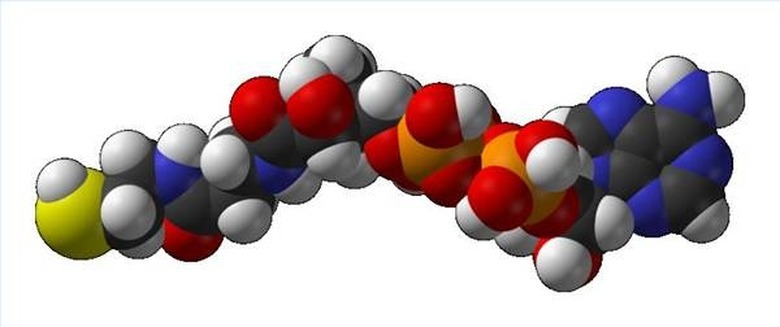Role Of Coenzymes
Coenzymes play a role in the functions of cells. Reactions within the cells work to either break down nutrients or combine molecules for cellular activities that keep the cells alive. Enzymes speed up these reactions. Without enzymes, these reactions may not occur. Coenzymes, in turn, support the functions of enzymes. They loosely bind to enzymes to help them complete their activities. Coenzymes are nonprotein, organic molecules that facilitate the catalysis, or reaction, of its enzyme.
Coenzymes Are Cofactors
Coenzymes Are Cofactors
Coenzymes are one of two types of cofactors used by enzymes in these enzymatic reactions. The other types of cofactors are inorganic ions. Magnesium, calcium and potassium ions are commonly used with enzymes to speed up these reactions.
Function of Coenzymes
Function of Coenzymes
Coenzymes work by binding to the active side of the enzymes, the side that works in the reaction. Since enzymes and coenzymes are nonmetal organic molecules, they bind together by forming covalent bonds. The coenzymes share electrons with the enzymes, rather than lose or gain electrons. When they form this bond, they only help the reaction to occur by carrying and transferring electrons through the reaction. Coenzymes do not become integral parts of the enzymatic reaction. Instead, the covalent bonds are broken at the end of the reaction, and the coenzyme returns back to free circulation within the cell until it is used again.
Vitamins and Coenzymes
Vitamins and Coenzymes
Taking vitamins, whether from eating foods or in supplement form, increases the amount of coenzymes in the body. Some vitamins help the body produce coenzymes, such as folic acid and some of the B vitamins, while other vitamins directly act as coenzymes, such as vitamin C. Without vitamins, the body would be unable to produce coenzymes.
The NAD Cycle
The NAD Cycle
NAD—nicotinamide adenine dinucleotide—is a coenzyme that is formed from vitamin B3. It works in several metabolic processes that goes through oxidation—the removal of a hydrogen ion—and reduction, or the gaining of a hydrogen ion. It works as a carrier of hydrogen atoms and transfers them to the end molecules in the enzyme reaction. The NAD coenzyme can be reused by the cell, over and over again.
Other Coenzymes
Other Coenzymes
Other coenzymes include ATP, or adenosine triphosphate, the source of energy flow in cells, as mentioned by the University of Toronto's Professor Laurence A. Moran. FAD, or flavin adenine dinucleotide, also functions in oxidation and reduction reactions, while PLP—pyridoxal-phosphate—plays many roles, including in amino acid reactions.
References
Cite This Article
MLA
Manal, Naima. "Role Of Coenzymes" sciencing.com, https://www.sciencing.com/role-coenzymes-5164918/. 24 April 2017.
APA
Manal, Naima. (2017, April 24). Role Of Coenzymes. sciencing.com. Retrieved from https://www.sciencing.com/role-coenzymes-5164918/
Chicago
Manal, Naima. Role Of Coenzymes last modified March 24, 2022. https://www.sciencing.com/role-coenzymes-5164918/
